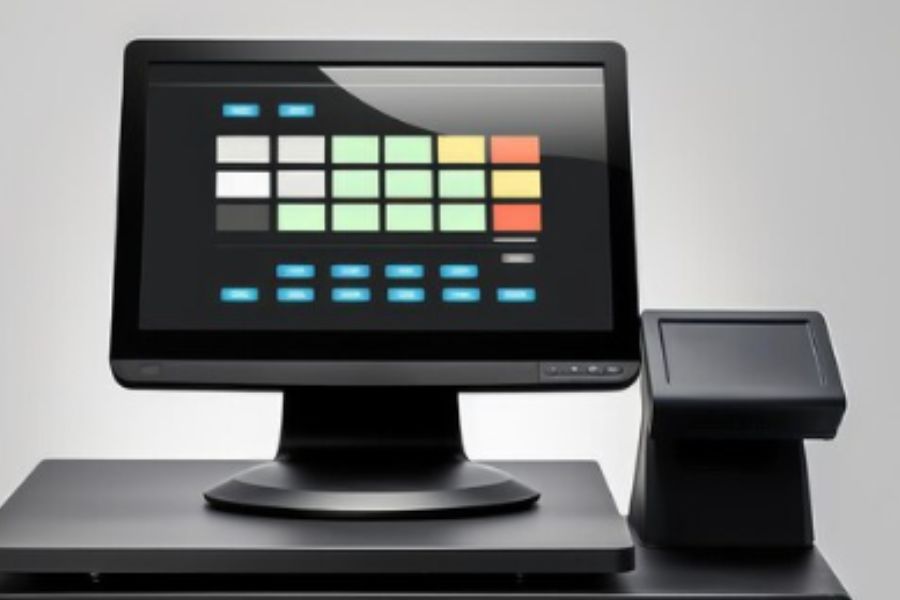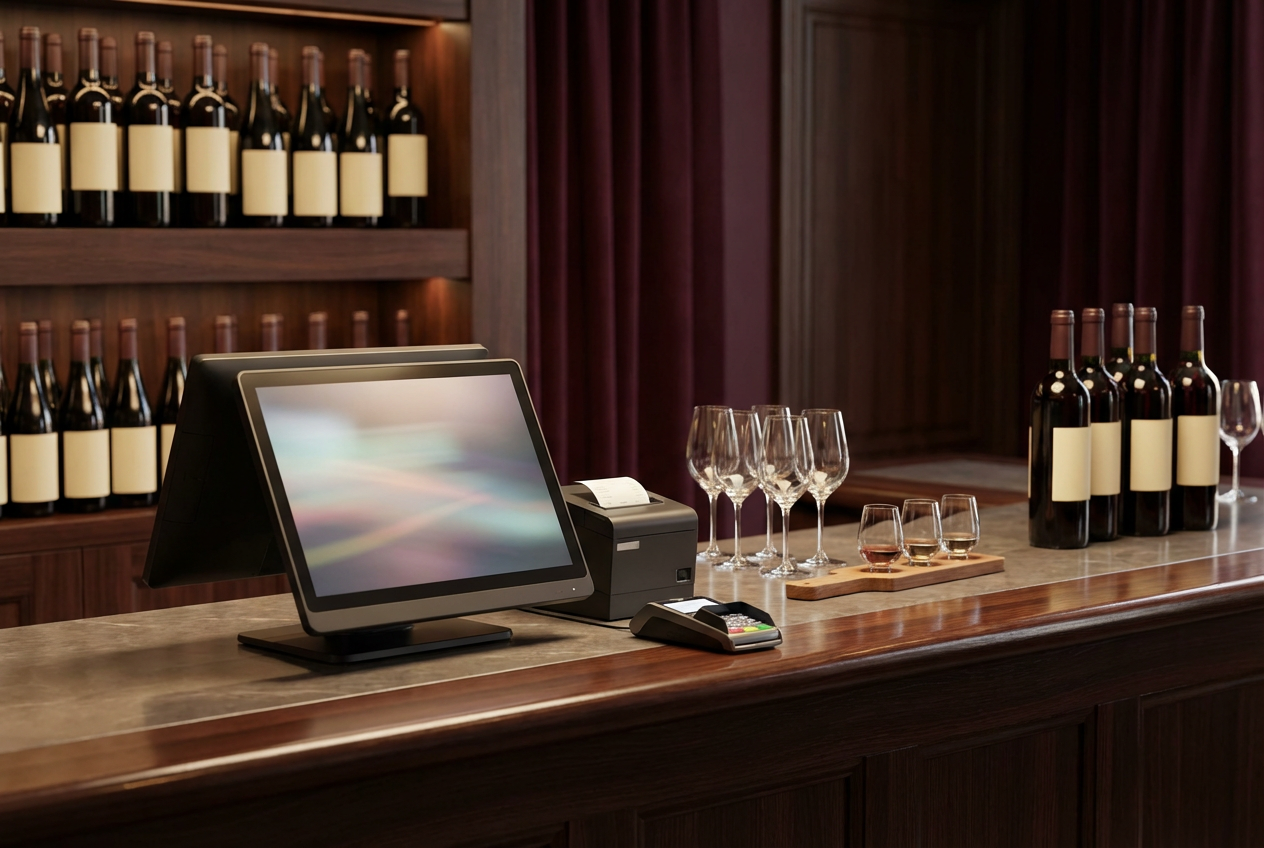Optical point-of-sale software transforms how eyecare practices manage operations and serve patients. Modern optical POS software streamlines inventory management, appointment scheduling, and insurance processing, saving staff time and reducing errors. These specialized solutions integrate prescription data with frame inventories to create seamless checkout experiences that boost patient satisfaction.
Selecting the right optical POS requires understanding your specific practice needs and growth goals. Quality systems offer robust inventory tracking, customer relationship management, and insurance verification capabilities. Practices that implement appropriate optical POS software typically see improved efficiency, reduced administrative burden, and increased sales through better patient experiences. Ready to transform your practice?
Why Eyecare Practices Should Invest in Optical Point-of-Sale Software
Eyecare practices face unique challenges that standard retail POS systems simply cannot address. Specialized optical POS software delivers targeted solutions that transform practice operations and boost revenue.
Improved Patient Experience
Modern optical POS systems create a streamlined checkout process that significantly reduces wait times for patients. The software automatically calculates pricing based on individual vision plan benefits, presenting accurate costs instantly.
Advanced systems also suggest relevant lens packages and add-ons at the perfect moment, increasing average transaction values naturally. Patients appreciate the transparency and efficiency, leading to higher satisfaction scores and increased referrals.
Better Inventory Management
Frame inventory represents a substantial investment for eyecare practices. Optical POS software provides real-time visibility into stock levels across all locations. This precise tracking eliminates guesswork about which frames need reordering and which styles underperform.
Practices gain insights into seasonal trends and patient preferences through detailed reports. Staff receive automated alerts when popular items reach reorder thresholds, preventing lost sales opportunities due to stockouts. The result: optimized inventory levels that maximize return on investment.
Reduced Errors and Enhanced Billing
Manual data entry between systems introduces numerous errors that cost practices money. Integrated optical POS software pulls prescription data directly from electronic health records, ensuring accuracy throughout the fulfillment process. The software automatically applies correct insurance coding, accelerating claim payments and reducing rejection rates.
Direct communication with lab systems eliminates transcription errors that lead to costly remakes. Practices report significant reductions in remake rates after implementing specialized optical POS systems.
Improved Efficiency and Reporting
Optical POS software captures detailed data on every transaction that flows through your practice. The system tracks sales patterns, inventory movements, and patient purchasing behaviors in real time. As a result, owners and managers can generate comprehensive reports with a few clicks.
►►► Optimal solution set for businesses: Multi store POS, Next-gen POS, Inventory Management Software (MSI), Self Service, Automation, Backorders
These analytics spotlight your highest-performing products and services, identifying which frames generate the most profit and which lens options sell most frequently. Seasonal trend analysis helps practices anticipate busy periods accurately, allowing for strategic staffing adjustments and inventory preparation.
Sophisticated optical POS systems can also forecast inventory needs based on historical sales data, ensuring popular styles remain in stock without excessive inventory investment.
Improved Patient Experience
Today’s patients expect personalized care that acknowledges their unique needs and preferences. Quality optical POS software creates comprehensive patient profiles that include frame style preferences, lens package history, and insurance details. Staff can instantly access this information during each patient interaction.
The digital patient journey starts with automated appointment scheduling that sends reminders at optimal intervals. During exams, the system seamlessly captures prescription data while noting specific patient concerns or preferences. This information follows the patient to the optical dispensary, where staff can make tailored recommendations based on previous purchases and lifestyle needs.
Core Features Every Optical POS Should Have
When evaluating optical point-of-sale systems, practices should focus on comprehensive solutions that address the unique requirements of eyecare businesses. The most effective systems integrate these essential capabilities:
Look for optical POS software that tracks frames, lenses, contact lenses, and accessories in real-time across all locations. Advanced systems monitor expiration dates, maintain par levels, and generate purchase orders automatically when stock reaches predetermined thresholds.
The best solutions include barcode scanning functionality and integrate directly with major optical suppliers for streamlined ordering.
- Patient Management
Robust patient profiles should store purchase history, insurance details, prescriptions, frame measurements, and style preferences. These profiles enable staff to provide personalized service and make informed recommendations during each visit.
Electronic signature capture for HIPAA compliance and secure storage of payment methods enhances the patient experience.
- Prescription Management
Quality systems validate prescriptions against industry standards to prevent costly errors. Look for software that converts prescriptions between plus and minus cylinder formats, calculates accurate lens parameters, and integrates directly with electronic health records. Direct lab integration eliminates transcription errors and accelerates order fulfillment.
- Insurance Processing
Effective optical POS systems verify benefits in real-time, calculate patient responsibility accurately, and submit claims electronically. The software should maintain updated fee schedules for major vision plans and provide detailed documentation for claim submission. Automated eligibility checks before appointments save valuable chair time.
- Additional Essential Features:
- Appointment scheduling that syncs with doctor availability and exam room resources
- Multi-location support with centralized data access and inventory transfers
- Comprehensive reporting on sales performance, inventory turns, and staff productivity
- Employee management tools, including commission tracking and performance metrics
The ideal optical POS becomes the operational backbone of your practice, connecting clinical care, optical dispensing, and business management into a seamless workflow that enhances both patient care and practice profitability.
How to Select the Right Optical POS Software for Your Business?
Choosing the ideal optical POS system requires careful evaluation of several key factors that align with your practice’s unique requirements and growth objectives.
- Assess Business Needs – Begin by documenting your practice’s daily operational challenges and workflow bottlenecks. List specific features needed to address these issues, such as insurance verification speed or inventory tracking precision. Consider practice size, patient volume, and specialty services when evaluating software capabilities.
- Analyze Budget and ROI – Establish a realistic budget that accounts for initial software costs, hardware requirements, and ongoing subscription fees. Request detailed pricing breakdowns from vendors, including implementation, training, and support costs. Calculate potential return on investment based on expected efficiency gains and revenue opportunities.
- Consider Technicals – Cloud-based solutions offer accessibility and automatic updates, but require reliable internet connectivity. On-premises options provide control over data but demand greater IT resources. Evaluate how seamlessly each system integrates with your current EHR, accounting software, and lab ordering platforms.
- Implementation and Support – Review each vendor’s implementation timeline and how it might impact daily operations. Assess training resources available for staff onboarding and ongoing education. Investigate support availability, response times, and access methods (phone, email, chat).
- Future-Proofing Your Decision – Select a system that can scale with your practice’s growth plans. Verify the vendor’s development roadmap aligns with industry trends and regulatory changes. Request references from practices similar to yours to gauge long-term satisfaction with the software.
ConnectPOS – An Innovative Optical POS Software
ConnectPOS is designed to meet the specific needs of retailers, including optical stores, by managing prescriptions and handling complex inventory. It enables businesses to manage both online and brick-and-mortar stores through a single system, ensuring data consistency across locations in real-time. This helps optical retailers maintain accurate records and serve customers more efficiently.
The system is handy for stores that require managing large catalogs, frequent restocking, and personalized orders. With features designed for day-to-day retail and clinical operations, ConnectPOS becomes a top optical POS software available on the market.
Key features for optical stores include:
- Multi-location control
Manage inventory, pricing, and promotions across several branches with centralized oversight. This makes it easier for optical chains to maintain consistency while adjusting to local demand.
- Inventory tracking tailored for optical products
Track frames, lenses, and accessories with detailed attributes such as color, size, and brand. Set low-stock alerts and move items between locations to avoid product gaps and missed sales.
- Employee and shift management
Monitor staff performance with built-in tools for time tracking, role assignment, and scheduling. This helps store managers keep operations running smoothly, especially during busy hours.
- Integrated customer and prescription records
Store detailed customer profiles, including purchase history and prescription data, for quick reorders and personalized service.
- Quick catalog setup and product search
Use the bulk import feature to upload product data in seconds. Staff can also look up items quickly using filters like brand, shape, or material, ideal for stores with large, varied stock.
- Flexible order handling
Support services like in-store pickup, home delivery, and split payments. This gives your customers more choice and convenience when buying eyewear or booking services.
Moreover, ConnectPOS streamlines employee management by integrating time clock, scheduling, payroll functions, and CRM tools to boost performance. The catalog import feature automates product data entry, simplifying the addition of new items and facilitating efficient product searches. With detailed categorization options and flexible order fulfillment methods, ConnectPOS caters to diverse customer needs, ensuring a smooth shopping experience.
In Conclusion
Implementing optical POS software can significantly enhance your retail operations and drive sales growth. With features like multi-location management, advanced inventory tracking, and seamless employee management, businesses can streamline their processes and improve customer experiences. This software allows retailers to adapt to market demands, optimize their resources, and maintain a competitive edge. By utilizing these tools, you can ensure that your business remains agile and responsive to customer needs.
To take your sales to the next level, consider the numerous advantages that ConnectPOS offers. Reach out to ConnectPOS today to learn how our Optical POS Software can transform your business.
FAQs: Optical POS Software
What is optical POS software?
It’s specialized software that manages eyecare transactions, prescriptions, insurance billing, and inventory for optometry practices and optical shops.
What features are specific to eyecare POS?
The software handles prescription management, frame and lens inventory tracking, insurance verification, VSP/EyeMed integration, appointment scheduling, optical measurements, and lab order processing.
How does it handle prescriptions?
The system stores digital prescriptions, validates Rx parameters, tracks expiration dates, enables electronic prescribing, and maintains patient prescription history.
Can it process insurance claims?
Yes, the software verifies benefits, submits claims electronically, tracks claim status, processes VSP/EyeMed, handles Medicare/Medicaid, and records copays and deductibles.
How does it manage frame inventory?
The system tracks frame stock, records measurements, manages consignment inventory, sends reorder alerts, generates purchase orders, and documents frame warranties.
Can it integrate with EHR systems?
Yes, most systems connect with electronic health records, digital imaging devices, practice management software, patient portals, and accounting systems.
►►► Optimal solution set for businesses: Shopify POS, Magento POS, BigCommerce POS, WooCommerce POS, NetSuite POS, E-Commerce POS



